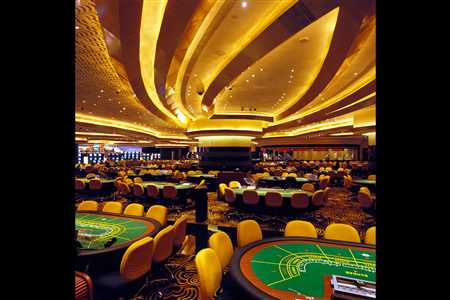

The landscape of leisure and entertainment is poised for transformation as significant developments are on the horizon. The latest initiatives aim to blend tourism, recreation, and vibrant social experiences, captivating locals and visitors alike. This evolution promises to reshape the area, creating a focal point for excitement and engagement.
In recent discussions, stakeholders have unveiled their vision for a state-of-the-art destination that seeks to enhance the economic and social fabric of the community. This venture not only aims to attract thrill-seekers but also to provide a plethora of opportunities for employment and growth. Excitement surrounding this undertaking is palpable, indicating a shift toward a more dynamic future.
As plans unfold, the community will witness a melding of innovative architecture and engaging attractions. The efforts reflect a strong commitment to fostering an environment that encourages leisure and entertainment, while also ensuring sustainability and inclusivity.
This initiative represents a strategic effort to enhance the entertainment and leisure offerings in a significant region. The vision encompasses a blend of hospitality, gaming, and dining experiences that aim to attract both local residents and visitors, contributing to economic growth and job creation.
The undertaking is positioned to transform the local landscape, introducing cutting-edge facilities and amenities that resonate with modern preferences. By capitalizing on the area’s unique attributes, the project seeks to create a vibrant destination that caters to diverse audiences, fostering community engagement and tourism.
Stakeholders are hopeful that this initiative will provide numerous benefits, including increased tax revenues and infrastructural improvements. The collaboration between public and private sectors will play a crucial role in ensuring the successful realization of this vision, driving forward-thinking innovations.
This section delves into the intricate financial landscape surrounding an exciting new venture. With the aim of transforming the local economy, substantial capital infusion is anticipated, coupled with meticulously crafted forecasts that underline potential growth trajectories. Stakeholders are keen to explore both initial expenditure and anticipated returns, providing a comprehensive overview of the project’s fiscal viability.
The opening phase of the project requires significant fiscal commitment, including costs related to land acquisition, infrastructure development, and regulatory compliance. Estimates suggest that the overall initial outlay could exceed several hundred million dollars, driven by the necessity for high-quality construction and innovative design elements that align with contemporary market expectations. Stakeholders are optimistic about the impact of these expenditures on employment rates and local business ecosystems.
Financial projections indicate promising revenue streams, driven by diverse offerings that cater to various demographics. By analyzing market trends and consumer behavior, analysts predict a robust return on investment within the first five years of operation. Projected revenues are expected to rise steadily, with optimistic scenarios suggesting potential growth rates of up to 10% annually, contingent on effective marketing strategies and continued economic stability in the region. Long-term sustainability is anticipated as new attractions and events are introduced, drawing visitors year-round.
The announcement of the new entertainment complex has sparked a variety of reactions from local residents and stakeholders. While some view the development as an opportunity for economic growth and job creation, others express apprehensions about the potential ramifications on the community. The duality of support and opposition highlights the complex dynamics at play as different perspectives converge on this significant proposal.
Proponents argue that the initiative could lead to substantial economic benefits, including the influx of tourists and the generation of new jobs. Many believe that such a project has the potential to revitalize the area, drawing visitors who would contribute to local businesses and services. The prospect of increased tax revenues also adds to the optimistic outlook of those in favor of the development.
This segment outlines the projected schedule for the infrastructure development, alongside the anticipated employment opportunities that will arise throughout the process. The initiatives aim to not only enrich the local economy but also provide a significant boost in job availability, fostering community growth and resilience.
The construction phase is expected to commence in the upcoming months, with a series of stages that will unfold over several years. Each phase will entail specific tasks, ranging from site preparation to the final touches of the establishment, and will involve various contractors and skilled laborers. This staged approach not only allows for systematic progress but also ensures that local workers are prioritized in the hiring process.
The job creation aspect is particularly noteworthy, as it is projected that thousands of positions will be made available across various sectors. From construction laborers to administrative staff, the opportunities will cater to a diverse range of skill sets. This influx of employment will have a rippling effect on the surrounding area, stimulating economic activity and creating a more vibrant community.
The introduction of a significant entertainment venue is poised to bring about a transformative economic shift in the region. The influx of visitors and investment could stimulate job creation, boost local businesses, and enhance overall revenue streams for the surrounding communities.
One of the most evident outcomes of such a development is the potential for substantial employment opportunities. The establishment is expected to generate a variety of positions across different sectors:
As influxes of tourists arrive, local enterprises can expect to experience increased patronage. This effect could lead to:
Overall, the anticipated financial benefits promise to enhance the economy of the area, laying the groundwork for sustainable growth and prosperity.
The introduction of a large-scale entertainment venue has the potential to bring numerous advantages to surrounding enterprises. The influx of visitors is likely to create a dynamic environment conducive to economic growth, providing opportunities for local vendors and service providers.
Moreover, small business owners can leverage this development by adjusting their offerings or services to align with the increased consumer interest. Innovating and adapting to new market conditions can prove vital for sustained success.
The overall effect on local businesses is expected to be positive, fostering an environment ripe for growth and collaboration. By capitalizing on the anticipated rise in activity, the community can thrive in this new economic landscape.
The development of a new entertainment complex is expected to significantly enhance the local tourism landscape, drawing visitors from various regions. This influx is likely to create a ripple effect, benefiting local businesses and the broader economy. Enhanced attractions combined with innovative hospitality services can transform the area into a sought-after destination.
As the number of visitors climbs, the potential for increased revenue becomes evident. Local hotels, restaurants, and retail establishments stand to gain from the surge in tourist activity. A vibrant tourism sector can lead to job creation, ensuring that the community experiences both short-term gains and long-lasting economic benefits.
The anticipated rise in foot traffic will also stimulate investment in infrastructure and public services, thereby improving the overall quality of life for residents. As new avenues for growth emerge, the potential for sustainable development grows, fostering a prosperous environment for both visitors and locals alike.
The current landscape of the residential property sector reflects a dynamic interplay of various factors, indicating significant transformations. New developments and shifting buyer preferences are creating a ripple effect, influencing both pricing and availability of homes. As the economy evolves, stakeholders are observing notable patterns that could shape future investments and lifestyle choices.
Recent statistics reveal a surge in transactions, driven by a growing demographic of potential homeowners. Affordability continues to be a crucial element, compelling many to explore suburban areas where prices are comparatively lower. Interest rates play a pivotal role, affecting the purchasing power of buyers and ultimately shaping market sentiment.
As urban environments undergo revitalization, they attract a diverse population. This influx stimulates demand for housing, leading to increased construction efforts. Developers are prioritizing modern amenities and sustainable options, catering to the evolving desires of residents. With the rise of remote work, there is also a noticeable shift towards properties that offer more space and flexibility.
The success of a major development initiative hinges on the collaboration and engagement of various parties involved in the process. This section delves into the strategic approach to project realization and how different stakeholders contribute to shaping the vision and execution of this significant undertaking. Key participants encompass local communities, governmental bodies, investors, and advocacy groups, each playing a crucial role in ensuring the project aligns with broader social and economic objectives.
Active participation of the community is vital in the developmental phase. Hosting forums, informational meetings, and collaborative workshops allows residents to express their perspectives, concerns, and suggestions. This open line of communication fosters a sense of ownership among community members and builds trust in the process, creating an environment conducive to collaboration. Feedback collected through these interactions influences design choices, operational plans, and the overall approach to project implementation.
Navigating the complex web of regulations and zoning laws is essential for the advancement of any significant project. Establishing partnerships with local authorities ensures compliance with legal requirements while also facilitating smoother progress through necessary approvals. By fostering relationships with regulatory agencies, developers can streamline the process, address potential challenges proactively, and promote a shared vision that enhances both the economic landscape and the welfare of the community.